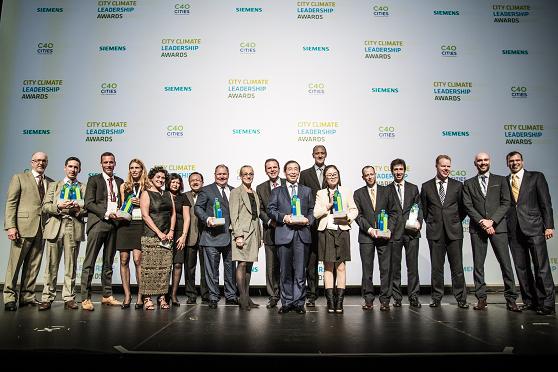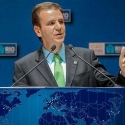Cities are leading the fight against climate change
C40 cities have demonstrated unparalleled leadership in addressing climate risks and impacts locally and globally – setting ambitious targets for the future and taking significant measures to tackle climate change head-on. As a result, cities around the world are now taking their rightful place at the climate negotiations table, in recognition of the impact they are already having, along with their ability to help shape an international agreement on climate change.
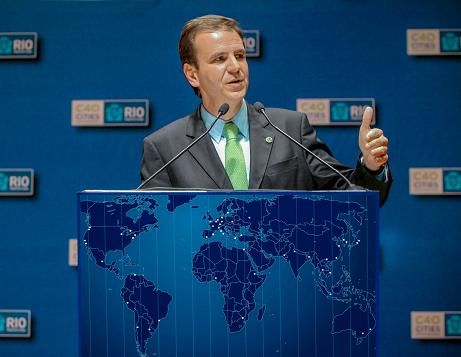
We all hope that a new inter-governmental climate treaty will be agreed upon in 2015 at COP21. But whatever happens in Paris, that agreement will not come into effect until at least 2020, by which time global emissions would already need to have peaked to achieve the 2°C objective.
There is a statistic that never fails to amaze me: half of humanity currently lives in cities, a figure which is expected to grow to 70 per cent by 2050. As the world becomes urbanised, cities are featuring more prominently in the global fight against climate change. Cities are not only a big part of the problem – contributing roughly 70 per cent of global greenhouse gas (GHG) emissions – they are also where solutions are being created and delivered. Cities have an enormous responsibility to address the risks that climate change poses and take steps to protect the well-being of the world’s citizens and economies.
Thankfully, cities have been taking strong action on climate change for years, while national governments continue to debate the issue and often get bogged down in rhetoric. Climate change and sustainable development are no longer an exclusive matter for nation states. I am hopeful that the UNFCCC’s COP20 forum will help bridge the gap between cities and nations on this issue, as cities finally begin to take their rightful place at the table, in recognition of the impact they are already having, along with their ability to help shape an international agreement on climate change.
C40 cities have demonstrated unparalleled leadership in taking meaningful climate actions. Our 69 members represent over 500 million people and almost 21 per cent of the world’s GDP
C40 cities have demonstrated unparalleled leadership in taking meaningful climate actions. Our 69 members represent over 500 million people and almost 21 per cent of the world’s GDP. Our cities have set ambitious targets for the future and are taking significant measures to tackle climate change head-on. In the last year alone, C40 cities have implemented over 8,000 climate actions. And as a result of our innovative network model, these cities are sharing their unique solutions to local challenges on a global scale.
To best streamline and speed up the process of collaboration, mayors must engage vigorously in City Diplomacy – one of the main pillars of my Chairmanship at C40, and a concept that promotes the exchange of information and experience. Mayors are pragmatic – we are held directly accountable to our citizens and must deliver support and services to our population swiftly and effectively. Cities also have a close relationship with their citizens and understand how climate change can also be positioned as an opportunity to create jobs and improve quality of life.
Evolving and strengthening the response
Further steps are also being taken to include cities from developing nations in the C40. I have dedicated my first year in office to the organisation’s expansion into cities in the global South, where urbanisation is taking place at an increasing rate, where the greatest challenges in sustainability lie and where urban innovation is developed, tested and disseminated. With this in mind, new cities in Africa and China have recently joined the network.
An additional priority for cities is resilience. We all know that the consequences of climate change are happening right now, and are increasing in frequency and intensity. In 2013 alone, the world saw 41 weather disasters that each caused more than US$1 billion worth of damages. Cities are at the front line of these events and our citizens are the victims. The statistical rise of casualties and economic losses from extreme weather events will only continue unless resilience becomes an intrinsic part of our long-term policies, our investments and our lives.
So, how do we evolve? We must grow, boost collaboration and develop ways to work in tandem with national organisations. One such important step is the creation of the global Compact of Mayors, the world’s largest effort for cities to fight climate change. The Compact will enable cities to publicly commit to deep GHG emissions reductions, make existing targets and plans public, and report on their progress annually, using a newly-standardised measurement system that is compatible with international practices, the Global Protocol on Community-scale GHG Emissions (GPC). Through this effort, cities will be choosing to meet the same requirements proposed for the international climate negotiations that will lead to a global climate treaty in 2015.
Launched by UN Secretary-General Ban Ki-moon and UN Special Envoy for Cities and Climate Change Michael R Bloomberg at the 2014 UN Climate Summit in New York, key partners of the Compact are C40, ICLEI – Local Governments for Sustainability and the United Cities and Local Governments (UCLG) – with support from UN-Habitat.
Existing commitments of 228 cities from the C40, ICLEI and UCLG networks will save a cumulative 2.8 gigatonnes of carbon dioxide equivalent by 2020
Therefore, as mayors, we are committing to set ambitious climate targets, make those voluntary commitments public, and hold ourselves accountable through rigorous and transparent reporting. We recently announced that existing commitments of 228 cities from the C40, ICLEI and UCLG networks will save a cumulative 2.8 gigatonnes of carbon dioxide equivalent (GtCO2e) by 2020.
That is important for three reasons:
- First, because 2020 is the earliest that a new inter-governmental Climate Treaty is expected to come into force
- Second, because it is the year by which global emissions need to have peaked if we are to get on a trajectory to avoid run-away climate change; and
- Third, because the 2.8Gt of emissions reductions pledged by this small group of cities is equivalent to one-fifth of the so-called ‘emissions gap’ – the difference between what national governments have already committed to do and the total cut in emissions that is needed to get onto that downward trajectory.
By demonstrating the impact of cities’ climate commitments on a global scale, these numbers are a first step in delivering the vision of the global Compact of Mayors.
Helping to achieve national targets
I was honoured to attend the second annual C40 and Siemens City Climate Leadership Awards (pictured below), also held in New York during Climate Week 2014, and see the 11 winning cities pick up their awards in categories as diverse as Adaptation and Resilience (Melbourne), Intelligent City Infrastructure (Barcelona) and Green Energy (Seoul).
It fully demonstrates how cities are positioned to make meaningful contributions towards more aggressive national targets to reduce emissions. This can be accomplished because mayors have strong influence over key policies that influence emissions, such as building energy standards, urban planning, waste collection and public transportation.
We are proving that cities can be true partners to nation states and the international community in bridging the global emissions gap through more ambitious and deeper GHG emissions targets.
To support this, C40 has conducted additional research, published at the UN Secretary-General’s Climate Summit, in partnership with Special Envoy Bloomberg and the Stockholm Environment Institute. This showed the potential for even greater cumulative emissions reduction. According to this research, which covered over 600 human settlements with a population over 750,000 inhabitants (a total of 1.5 billion people), the potential for cumulative GHG emissions reduction could reach 25GtCO2e by 2030 and 147GtCO2e by 2050.
Partnership development
To further accelerate progress and investments in urban solutions to the level that mayors want to deliver, other partners are also needed. The Cities Climate Finance Leadership Alliance is one such coalition of public and private sector partners that aims to stimulate investments in climate-smart infrastructure to the tune of trillions of dollars a year. We also recently announced a new City Creditworthiness Partnership, which brings together the resources of C40, the World Bank and Bloomberg Philanthropies to help 300 cities strengthen their creditworthiness and attract investors.
Top-level collaboration and handshakes are all well and good but we must remember that change must occur from within cities themselves. I can best illustrate the importance of cities in the fight against climate change by describing what we in Rio de Janeiro are achieving by implementing new and efficient strategies and developments at a grassroots level.
Rio de Janeiro is experiencing a unique moment in its history and we are actively using this accelerated development, thanks to hosting the 2014 World Cup and 2016 Olympic Games, as well as the favourable economic climate, to put in place forward-thinking solutions to all manner of challenges, including climate change.
We also recently announced a new City Creditworthiness Partnership, which brings together the resources of C40, the World Bank and Bloomberg Philanthropies to help 300 cities strengthen their creditworthiness and attract investors
One of our fundamental approaches is based on collaboration. We will never solve the challenge of climate change or see it as a strong catalyst for promoting sustainable development if we work in an isolated or fragmented way. In Rio, we are involved in an increasing number of projects with other C40 cities, in addition to learning and exchanging information with other national and international partners. We have also been working in much closer partnership with our state and national governments – most of our Olympic legacy projects have involved all levels of government.
And of course the involvement and mobilisation of our citizens and the population of Rio has been a critical component to success. I have coined a term that encompasses this participatory philosophy – Polisdigitocracy – a strategy that uses open data and social and digital media to increase the collaboration between city governments and their citizens in the development and implementation of climate policies and programmes. I am making it a guiding tenet of my Chairmanship of the C40. We must employ all the tools we have at hand to promote engagement and participation from the ground up.
Measurement is another vital tool in the fight against climate change, because we can only manage what we can measure. We have developed the High Performance Management Programme in Rio with clear targets for each city secretary and department. From each individual city employee right up to the major revitalisation works, all activities are carefully assessed and measured so that we can plot the progress of our work to make sure we achieve our targeted goals and ultimate vision.
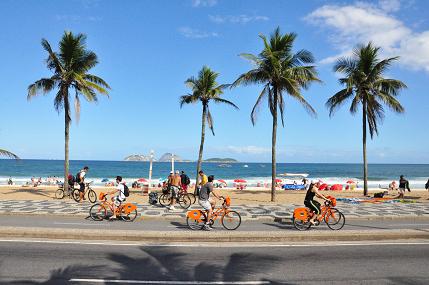 The Olympic legacy
The Olympic legacy
The largest and most important development in the city is the preparation for the Olympics in 2016 and, more importantly, the legacy it will leave. The Games has provided us with a unique opportunity to drive our sustainability agenda while making lasting changes for the city and its citizens.
Since the start of the Olympic project, I wanted the Games to serve the city. More than simply carrying out works and organising the event itself, the goal was to make Rio de Janeiro a better place for its residents, with significant changes in transport, urban infrastructure, sustainability and social development. Therefore, City Hall has developed projects aimed at providing maximum benefits to our citizens.
Bus rapid transit (BRT) systems, for instance, are redefining the existing bus routes and promoting integration of all modes of transport (ferries, subways, buses and trains). We have built 150km of new bus rapid transit infrastructure, increasing the percentage of the population using mass transit from 18 per cent in 2009 to 63 per cent by 2016. 450km of bicycle lanes are also planned by 2016 to further reduce car use.
Upon completion, the Marvelous Port – the regeneration of the entire dilapidated port area – will generate benefits far beyond the Games, ensuring that one of the gateways to the city becomes an area worthy of its past. In fact, the redevelopment of the Port area has already uncovered archaeological treasures such as the old pier and the Valongo Hanging Gardens. Downtown has also received a brand new cultural icon, the Art Museum of Rio (MAR), which was awarded the title of ‘Best Building’ of 2013 in the Museum category at the internationally recognised Architizer A+ Awards.
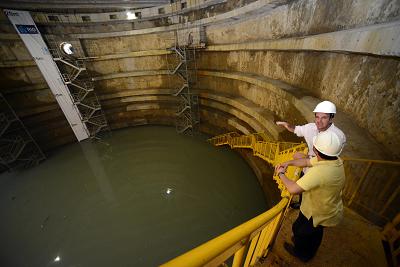
Besides the benefits directly associated with the Games, the event is also driving the development of other actions that will yield a permanent legacy. The Rio Operations Center, opened in 2010, houses 400 professionals working in three shifts, 24 hours a day, to monitor the city and integrate actions to avoid or mitigate traffic and climate-related incidents.
Sharing innovation
It is with pride that I can boast about the many and varied developments in Rio that are designed to combat climate change and educate the population to provide a more sustainable future for their children and beyond. And I am thrilled that through the C40 network, we can share our successes and our challenges with other cities working to create a better future for their citizens as well.
Just two years ago, Rio was one of only 13 cities in the C40 group that had BRT programmes. Because we are working together that number has risen to 35, more than half the total C40 network. Bogotá, Buenos Aires, Istanbul and Johannesburg have all implemented successful BRT networks. Paris has created an electric car-sharing system and Shenzhen has launched a sophisticated carbon emissions trading scheme. New York is improving its resilience to super storms and many other cities are addressing their challenges with creativity and leadership.
As we continue to grow and add powerful allies at all levels of government we now set our sights on COP21 in Paris, building on a successful meeting of nations in Lima
The level of innovation in our cities continues to inspire me. Shenzhen has introduced a new-energy vehicle fleet of more than 6,000 units, making it the largest zero-emissions fleet in service worldwide. This project aims to add 35,000 new-energy vehicles to the fleet in the next two years and has enabled the city to significantly reduce CO2 emissions between 2009 and 2013. Dhaka’s Integrated Solid Waste Management Plan aims to re-engineer and improve waste disposal sites, thereby reducing emissions by 276,000 tonnes annually, with a goal of collecting 68 per cent of the waste produced in the inner metropolitan area. The ‘New Taxi for London’ project is working to develop new zero emission-capable vehicles with manufacturers to meet a goal of reducing emissions from the city’s black taxi fleet by up to 100 per cent in central London and around 75 per cent throughout the rest of the city. Vancouver’s neighbourhood energy systems aim to reduce GHG emissions by 60 per cent compared with traditional heating sources and supply affordable, reliable, and low carbon thermal energy to its citizens. This project is expected to reduce emissions by 9,000 tonnes annually by 2020.
These are just some of the efforts being made across the C40 network. As we continue to grow and add powerful allies at all levels of government we now set our sights on COP21 in Paris, building on a successful meeting of nations here in Lima. We, as Mayors and cities, urge you to join us in a more dynamic and proactive fight against climate change.

